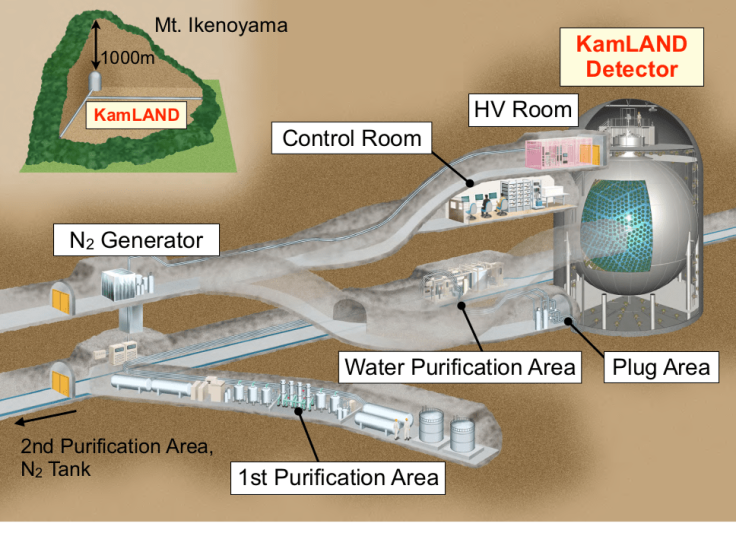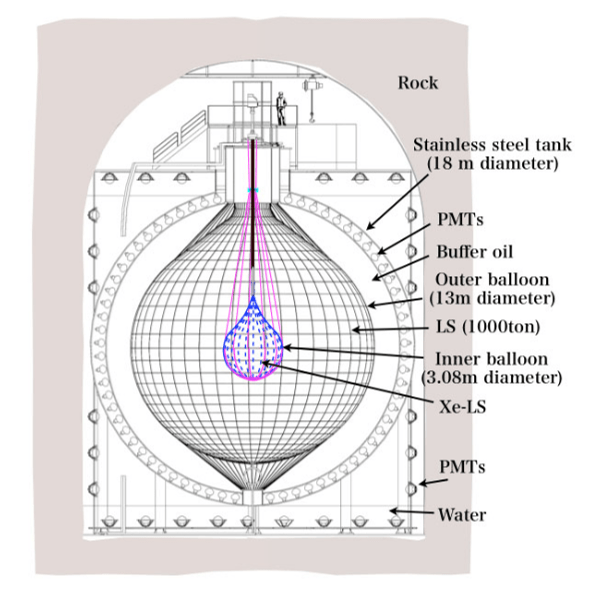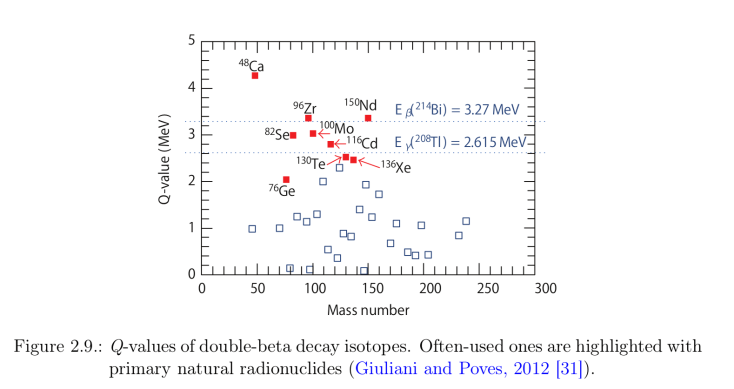(This blog post was originally posted on Bouke’s personal blog. Bouke has just arrived in Japan for an internship with the KamLAND-Zen collaboration at Tohoku University in Sendai, Japan. Read more about his trip in the Nikhef news article)
Time flies!
It’s only been two weeks since I first arrived in Sendai and got to meet my fellow researchers at RCNS. And yet, next week, I will already exchange my cosy, manga-littered office (which I was just starting to get used to!) for an entirely different kind of scenery. On Thursday, November the 22nd, I will leave Sendai and travel to the small mountain village of 神岡 (Kamioka), where I will reside for 12 days to help out at the KamLAND-Zen detector site.
Reaching the location is no small task! Besides a rather sophisticated commute to the local visitor center — the buses to and from the closest Shinkansen railway station depart only once or twice every three hours, between 09:50 in the morning and 17:18 in the afternoon — one needs to drive through several narrow tunnels leading deep into the heart of nearby Mount Ike (池ノ山), before arriving at the actual detector facilities. Fortunately for me, though, I won’t have to accomplish the latter on my own. Since there are always several researchers monitoring the status of the experiment from the local control rooms, there will be people around to get me in and out of the mountain when needed. A most welcome thing, considering that I haven’t got a driver’s licence (nor the nerve to stumble through a maze of dimly lit underground highways on foot).
At the moment I cannot yet tell you in detail what the detector shift will look like. From previous meetings on the experimental hardware, I know that, in a broad sense, I will be involved in helping to ensure that the data acquisition processes run smoothly and that the filling and circulating of detector fluids goes according to plan. And of course, I will have to follow the necessary safety instructions and training sessions beforehand. But other than that, the details of next week’s procedures are still up for discovery. I will write more on them in two weeks (hopefully with some accompanying pictures), when I’ve actually experienced the detector site for myself. In the meantime, let me explain a bit more about the ins and outs of the detector itself.
The location of the KamLAND detector facilities underneath mount Ike (figure 3.1 from Matsuda Sayuri’s doctoral thesis (2018, Tohoku University))
The first question we need to answer, before we look at the design and structure of the detector is why it is situated underneath a mountain, deep within an old mining complex, in the first place. As I told you during my first, introductory blog post, the process which the KamLAND-Zen experiment is looking for (neutrinoless double beta decay, or 0νββ-decay) is extremely rare. In fact, some of our most recent measurements have shown that the half-life time for this phenomenon within our source material (an isotope of the noble gas Xenon, 136Xe) must be greater than 1026 years. That is: the estimated time over which half of the Xenon isotopes within our detector will have decayed through 0νββ-decay must be over one hundred septillion years (or ten quadrillion lifespans of the universe, if you prefer that number).
So how do you detect a process which happens so seldomly? Aren’t we completely bonkers for trying? Perhaps a little. But if the odds of finding neutrinoless double beta decay are stacked against us, then the reason behind it most likely isn’t a lack of due experimental consideration.
Two important factors come into play when considering the observability of extremely rare phenomena such as 0νββ-decay. The first is the quantity of the available source material. Sure enough, if there would be only one isotope of 136Xe lying around, you could wait for an eternity, but you would never see it undergo 0νββ-decay. However, if you have instead several hundred kilograms of source material, the chances for observing one of the consistent isotopes undergo a 0νββ-decay transition within a conceivable time-window (say, a few years) will become much higher. This is why all neutrinoless double beta decay experiments strive for the installation of as much target material as possible, whilst attempting to look at it for as long as possible: the exposure (= target mass x observing timespan) ideally needs to be maximized.
The second ingredient to a successful observation is the amount of background signal which you receive. Since it’s not possible for a detector to be designed such that it exclusively registers signals from 0νββ-decay, many other processes will contribute to the total number of registered events, with some of them looking extremely similar to 0νββ-decay in terms of emitted energy or event origin. Therefore it is of great importance for a detector such as KamLAND-Zen to be shielded from backgrounds as much as possible. It is here that we find the answer to the question we originally set out with.
One important factor of noise within the KamLAND-Zen experiment is formed by cosmogenic muons. These are a type of leptons (just like the electron and the neutrinos), which are created when high-energy particles originating from outer space (what we call ‘primary cosmic rays’) hit atoms in the atmosphere and fall apart into a cascade of other, less energetic particles. To reduce the influx of such muons as much as possible, one needs shielding from above. So an abandoned mine shaft, situated about one kilometer underneath a mountain top, is not a bad choice of location. In the case of KamLAND-Zen, we say that the 1 kilometer rock overburden provided by Mount Ike, creates a 2700 meters water equivalent (m.w.e. for short) of shielding against external backgrounds. This reduces the number of cosmogenic muons at the detector site by a factor of 10-5 compared to the rate we observe at sea.
KamLAND-Zen detector lay-out as presented in by Shirai et al. (2017). Indicated in grey is the original KamLAND detector facility, whilst colored parts show the new additions introduced after installation of the inner balloon (IB) for KamLAND-Zen.
Aside from the shielding generated by surrounding rocks, the KamLAND-zen detector comes with several man-made shielding components too, protecting the innermost compartments against multiple different background sources. Before we delve into this further, it is important that we discuss the detector’s overall layout, as well as some of its accompanying history, first.
As I mentioned in my first blog post, the KamLAND-Zen experiment played an important role in confirming the presence of neutrino oscillations in its past. At the time, the detector was still called KamLAND (Kamioka Liquid-scintillator Anti-Neutrino Detector), without the ‘Zen’ (for Zero neutrino). Even though several small and large refurbishments and detector adjustments have taken place in the meantime, most of the original structure from that period still stands today. The main compartment consists of a large 13 meter diameter EVOH (polyvinyl alcohol) balloon, filled with a fluid, which fluoresces if light or charged particles pass through it (the liquid scintillator, consisting of around 80% Normalparaffin solvent, 20% Pseudocumene and a small trace of PPO). This balloon is surrounded by two encapsulating containers, which provide additional shielding.
Going outwards from the balloon, you first encounter a spherical, stainless steel tank, which measures 18 meters in diameter. This tank forms the boundary of what is called the inner detector (ID for short) and is equipped with 1879 individual light detectors, known as photo-multiplier tubes (PMTs), which collect the scintillation light originating from the fluid inside the balloon and convert it into a readable electric current.
It is important to understand how the inner detector is filled up. Aside from the liquid scintillator inside the balloon, the ID contains another type of oil (filling the area between the balloon and the stainless steel container and the space be†ween the individual PMTs), which serves as a buffer against incoming gamma-rays (i.e. high-energetic photons) and neutrons. “Where do these particles come from?”, one might ask. After all, doesn’t the surrounding mountain already block such noise factors? Naively, one might be tempted to reply with a yes. But such an answer would wrongly assume that both the rock and the detector material are exempt from radioactivity. Hence, a resolute no would be a better reaction. Gamma-rays are created within decays of naturally present 208Tl and 40K, whilst highly energetic neutrons are generated by interactions of cosmogenic muons with material inside or outside the detector.
When we venture further outwards, we cross from the sticky buffer oil, into a bath of highly purified water, which is continuously resupplied by a nearby reverse osmosis purification system. Surrounded by a cylindrical, stainless steel casing 19 meters in diameter and 20 meters in height, this outer detector (OD), serves as a means to veto any signals originating from ingoing muons. For this purpose we use Cherenkov radiation. I’m positive that all of you are in some way or another familiar with the cause behind Cherenkov radiation. After all, it is the same cause which lies at the the root of many everyday optical phenomena such as the refraction of light in a drinking glass or the formation of a rainbow through a prism: i.e. the fact that the speed at which a light wave travels through a medium, decreases depending upon the medium’s properties1.
One of the more exotic consequences of a decrease in a light wave’s speed through a medium is Cherenkov emission. Often observed as a pervasive blue glow within the water basins of nuclear reactors, Cherenkov radiation forms when highly energetic particles, such as the muons passing through our detector, travel at speeds exceeding those of light waves within the same medium. What occurs in such scenarios, is in some ways comparable to the creation of a sonic boom when a jet plane flies at speeds in excess of the sound barrier. In the latter case, sound waves emanating from the plane bundle up in the wake of the jet to form a shock front, that is heard as a loud, startling bang when it reaches unsuspecting passers-by below. Similarly, the light emitted by a superluminous charged particle, will bundle up to form a shock wave of light that propagates outwards from the particle’s trajectory.
The generation of Cherenkov light by the propagation of a superluminous charged particle through a transparent medium (from Wikipedia)
Let us now return to the explanation of the detector layout. Installed along the wall of the outer detector are 225 additional PMTs, which catch the Cherenkov radiation originating from the superluminous muons. Based on the subsequent reconstruction of their directionality, signals caused by these same muons further down the line (i.e. within the inner detector) can be filtered out.
Having traveled from within the KamLAND balloon, through the liquid scintillator, the buffer oil and the water container, to the outer detector wall, we’ve reached the boundaries of the old experiment. But that doesn’t conclude the explanation of the detector workings just yet! After all, we’re still left with the question what’s ‘Zen’ about KamLAND-Zen.
I already briefly stipulated on it, during the first half of this blog entry, but to be able to observe neutrinoless double beta-decay you need to install a nuclear isotope which is actually capable of undergoing this transition. And, if possible, lots of it too! In the case of KamLAND-Zen, the choice fell on 136Xe. Not only does it have a high isotopic abundance (around 8.9%), it is also relatively easy to enrich (the abundance within the material used, can be boosted to around 90%), with costs for enrichment lying some 90% lower than the 50-100$/g of another popular candidate isotope, 76Ge. Furthermore the combined energy of the electrons emitted by 136Xe 0νββ-decay (the so called Q-value), as well as the isotope’s mass number (136) are relatively high, cementing the observable light signal in a region that is naturally low in background.
Although the filling of target material (Xe-LS: a mixture of KamLAND liquid scintillator fluid and dissolved, highly enriched Xenon) in the current experimental run is still in process at this moment, the plan is to install the detector with 750kg of Xenon by the end of November. This will allow the start of a new data acquisition phase by the end of this year.
The container holding the Xe-LS, is another balloon (this time made from nylon), which is spun up inside of the original KamLAND balloon via a series of strings and tubes attached to the detector roof. I will spare you the details, but one thing I would like you to appreciate and take home is how difficult the fabrication of this balloon alone has been. Since KamLAND-Zen is extremely sensitive to radioactive contamination within the inner detector, all stops had to be pulled out in order to decrease impurities. In practice, this meant several long days spent welding pieces of fabric together inside of a specially prepared cleanroom for some of my coworkers. Not surprisingly, the last few weeks have been extremely exciting (and nerve-wrecking), in the sense that we had to monitor the balloon’s structural integrity throughout the filling procedure.
It will be interesting to see what the coming data acquisition period will bring. If anything, my experiences over the past few months (both here and in back in Amsterdam) have made me well aware of the fortunate position that I’m in, having been granted the opportunity to join the collaboration at such an important time. And seeing the detector up close will undoubtedly cement that realisation even further. I can’t wait to share some of my on-site experiences and pictures with you in two weeks!
If time allows, I will also try to submit one or two shorter entries before my stay in Kamioka, so stay tuned!
Footnotes
1. For the connoisseurs: when I speak about a variable light speed here, I’m of course referring to the light wave’s phase velocity, not the actual speed of light in vacuum, which forms a fundamental constant of nature.
This blog post was originally posted here.



